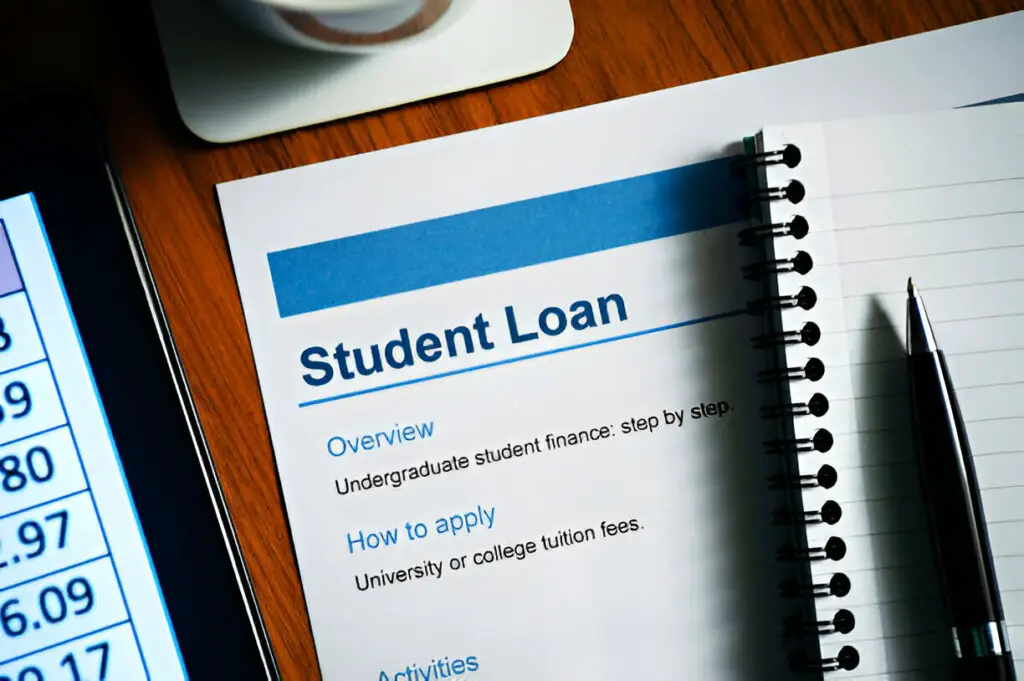Last Updated on March 9, 2025 by NAMS Editor
While credit cards may seem like a convenient way to pay off student loan balances, there are important factors to consider before relying on plastic to chip away at debts. In this comprehensive guide, we’ll explore the potential benefits and drawbacks of using credit cards for student loan payments. By understanding both sides of the debate, readers can make informed choices about the best repayment strategies for their financial situations.
As student loan balances climb to astronomical levels, many borrowers are looking for creative ways to tackle their debts. Using credit cards to pay student loans seems like an easy shortcut, but it’s not always the best long-term solution. Credit cards typically charge high interest rates that can outweigh any benefits. However, in some situations, a credit card payment plan can offer temporary relief for financially struggling loan holders. Let’s dive deeper into the key pros and cons.
Technical Concepts
Before weighing the options, it’s important to understand some technical concepts related to student loans and credit cards:
Interest Rate: This is the percentage charged annually on the outstanding balance. Federal student loans have fixed rates set each year, usually between 3-7%. Credit cards have variable rates averaging over 16%.
Minimum Monthly Payment: The lowest amount due each billing cycle to avoid late fees. For credit cards it’s usually 2-3% of the balance but never less than $25. Student loans have set repayment plans lasting 10-25+ years with fixed monthly dues.
Balance Transfers: Moving an existing debt from one credit card or lender to another, sometimes at a 0% promotional interest rate for 6-18 months. This tactic could be used to temporarily avoid student loan interest.
APRs: The Annual Percentage Rate reflects the true total cost of credit over time, including interest rates, fees, and other charges expressed as a single rate. Credit cards have much higher APRs than federal student loans.
With these core concepts explained, let’s examine the potential pros and cons of paying student loans with credit cards in more detail.
Pros of Using Credit Cards
Temporary Interest Relief
For borrowers struggling with high interest rates on student loans, the ability to execute a 0% APR balance transfer could provide months of breathing room without added interest costs. This tactic may make minimum payments more affordable in the short run.
Rewards Potential
Some travel and cash back rewards credit cards offer 1-5% back on purchases. Using a rewards card to pay student loans could accumulate bonus points or miles to offset travel costs or other expenses. However, the interest charges would need to be weighed against any rewards value.
Emergency Fund Access
If an unplanned expense arises, credit cards provide liquidity and flexibility that student loans lack. Borrowers could put emergency costs on a card and repay over time while keeping their student loan payment amounts steady. But the debt would accrue high interest.
Cons of Using Credit Cards
Higher Long-Term Costs
While a 0% promotion may delay interest, credit cards have much higher ongoing APRs than student loans over the life of the debt. Unless the balance is paid off during the intro period, more interest will be owed in the long run using plastic.
Risk of Missed Payments
Credit cards require monthly minimum payments, but student loans offer more flexible repayment options. If a job is lost or expenses rise, skipping credit card bills could severely damage credit scores versus briefly pausing student loan repayments. Late fees and penalties also apply.
No Forgiveness Potential
Certain careers like teaching or public service offer student loan forgiveness after 10 years of qualifying repayments. But payments made with credit cards would not count towards loan forgiveness programs. Borrowers would remain obligated for the full balance plus credit card charges.
Revolving Debt Cycle
Putting expenses on plastic can perpetuate a cycle of accumulating interest and carrying debt month after month. Using credit cards for long-term obligations like student loans fails to address the underlying budget challenges and piles on more costs over the lifetime of repayment.
No Consolidation Options
Federal student loan consolidation programs offer benefits like a single monthly payment at a fixed interest rate. But student debt paid via credit cards remains scattered among multiple accounts, preventing consolidation savings.
Should You Do It? Analyzing the Tradeoffs
After weighing these pros and cons, the decision depends on individual circumstances. For borrowers able to minimize interest via a 0% balance transfer with careful budgeting, credit cards could offer temporary payment relief. But anyone facing financial stresses may be better served addressing the root causes rather than compounding costs through multiple layers of interest-charging debt.
Some scenarios where limited credit card usage could make sense include:
- Those with excellent credit seeking 0% balance transfer offers of 18+ months to delay student loan interest at no penalty. However, the full balance must be paid off during the promotional period to avoid high ongoing credit rates.
- Graduates or unemployed individuals needing a short-term solution while securing a job. But employment must be obtained quickly before 0% expires to successfully pay everything off upfront.
- Borrowers confident they can accelerate monthly payments and pay the credit card balance in full within 12-18 months to avoid long-term credit charges exceeding federal loan rates. Aggressive overpayments would be required.
On the other hand, scenarios where credit cards are inadvisable include:
- Individuals with subprime credit scores unable to qualify for competitive 0% promotions. Standard credit rates will exceed student loan terms.
- Those carrying large student loan balances that cannot realistically be paid off during an intro period. Credit debts would compound student obligations long-term.
- People unwilling or unable to meticulously manage due dates across multiple accounts. Late payments destroy credit histories and trigger penalty interest.
- Borrowers facing financial instability unable to continue steady payments if job loss or emergency expenses arise. Credit risks are greater than pausing federal loan terms.
Overall, credit cards should only be a very temporary band-aid for managing student debt in limited optimal situations. The smartest approach is addressing underlying budget challenges to realistically repay loans over time at lower fixed rates whenever possible.
Sustainable Alternatives to Consider
Rather than relying on credit lines, financially strained borrowers have better options:
- Income-Driven Repayment Plans: Cap monthly payments at a percentage of discretionary income with potential loan forgiveness after 20-25 years.
- Forbearance/Deferment: Pause payments for economic hardship with no added interest if necessary. Extends repayment term to ease burden.
- Loan Consolidation: Simplify multiple debts into a single monthly billing at a weighted average interest rate, which may be lower than credit rates.
- Refinancing: If eligible based on income and credit, refinance federal loans to a private lender for a lower fixed rate and accelerated payoff timeline.
- Budget Refinement: Reduce expenses through cutbacks, side gigs, or living with family to divert more funds towards loan balances over time.
- Loan Forgiveness Programs: Fields like teaching and public service offer discharge of remaining debt balances after consistent on-time payments for 10 years.
When responsibly applied, these options tackle debt sustainably versus adding costly credit cycles on top of student obligations. Counseling through the Department of Education is also available to devise custom plans.
Conclusion
To wrap up, using credit cards should generally be avoided as long-term repayment solutions for student loans due to high interest rates compounding debt over time. Limited credit card usage could temporarily delay costs in niche scenarios involving skillful balance transfers paired with committed accelerated payments. However, many alternatives better address underlying budget challenges to realistically pay down student obligations at lower fixed rates whenever possible. With informed choices weighing all sides, borrowers can craft plans aligning with individual financial realities and goals. Overall health and progress are better than short-term fixes which often do more harm than good in the long run.


